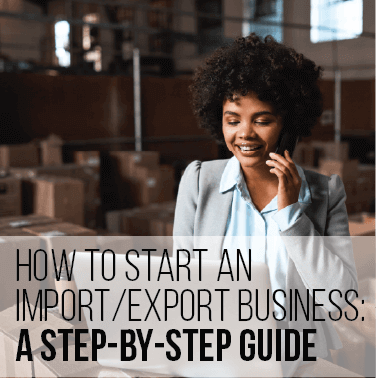
Start an import export business with our step-by-step how-to guide. More and more these days, interest in how to Import and export is growing in popularity. The global trade landscape is shifting and supply chains are in flux. Many entrepreneurs are deciding they have the resources and know-how to take advantage and test the international market themselves.
Start an import export business using these steps:
Our comprehensive guide on how to start an import export business covers everything you need to know, including startup costs, paperwork, insurance and more. The guide also details how working with a trusted customs consultant or 3PL provider can help you get started.

Start Your Business With Help From the Experts.
Our 30 Minute Licensed Expert Consulting Will Personally Guide You.
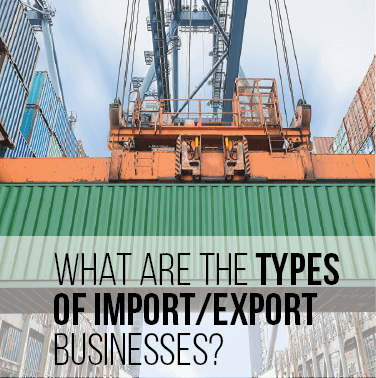
Before you decide to start an import export business, you have to decide what type of import export business you want to create. Some companies simply oversee global transactions, while others act as a middleman. A few businesses take a purely entrepreneurial approach handling all of the import/export operations themselves.
Listed below are the three main types of import export businesses, along with a short description of how each one works.
Individuals who start an import export business of this type are considered free agents. They may or may not specialize in any one particular product or market. Instead, they manufacture or purchase merchandise from other vendors and then resell it overseas. This type of business is risky but it also provides an opportunity for greater profit.
The work of an ETC is similar to that of a middleman, or a distributor. Rather than developing its own product line, an ETC will seek out foreign buyers for goods and then find a domestic seller to export those goods. In some cases, the ETC will take ownership of the goods themselves and export them, working on a commission.
An EMC does exactly what the name implies - it manages trade operations for an exporter. If a domestic company plans to export its products overseas, an EMC will handle all of the logistics. This includes hiring distributors, creating marketing materials, and getting the goods shipped.
In regards to the types of businesses listed above, none of them can be classified as the best or worst. Ultimately, your decision of which one to move forward with comes down to a few important factors. These factors include personal preference, strengths and weaknesses, and risk/profit comfortability.
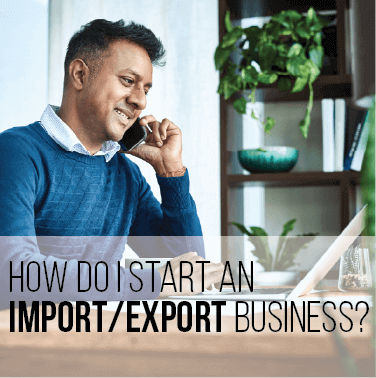
Starting an eCommerce business isn’t always easy, but if done right, it can be very rewarding. Not only does it require time, money and effort to get off the ground, but a certain amount of know-how and the ability to learn and adapt on the fly. We’ve put together this step-by-step guide to help you get started.
Two of the most important questions you can ask yourself when choosing products to import or export are:
Whether or not you can sell the products will determine how long you can run the business. Your level of passion for the products you’re selling will determine how long you want to run the business.
No matter what you choose, it’s crucial that you do your research beforehand. You should know what markets your product is most likely to sell in, how to reach your target market, and your opportunity for growth in those markets. You also need to consider the level of competition you’ll be facing, both for the product itself and in the foreign markets you choose.
Market research doesn’t stop after starting your business. Your research should be continuous to keep up with current market trends and ensure that you remain an expert on the products you’re selling.
Once you’ve actually done the proper research and determined that it is a viable option to start an import export business, it’s time to make it official.
Depending on the size and scale of your business, you’ll need to register with the local, state, or even national government. You may also need to file for foreign qualification and obtain the proper licenses. The U.S. Small Business Administration has a step-by-step guide on everything you need to know to get your new business registered.
There’s almost nothing that matters more for a business than its online presence. To get your new business off the ground, you need to create a website, social media accounts, add contact information and show visible online activity. This will give you a chance to open up channels for communication, market your products, grow your customer base and deliver excellent customer service.
Now that you can call yourself a registered business and have decided which products you intend to sell, it’s time to source your products and find a reputable supplier. That could mean a local manufacturer, an international supplier, or even yourself. Once you find a supplier, it’s your job to convince them that it would be beneficial to work with you.
There are a number of companies out there that can help you find suppliers. One of the largest is Alibaba, a Chinese-based company that can help with sourcing products from Asia. If you’re looking for an alternative to Alibaba, Global Sources, DH Gate and All.Biz are all popular options.
However, new importers and exporters should exercise caution when selecting which companies to partner with. Some require high order minimums, while others offer prices that don’t accurately reflect costs, to name a few risks. In addition to thoroughly vetting these companies and suppliers, you’ll want to make use of incoterms ®, also known as international commerce terms, which act as guidelines that are mutually agreed upon between a seller and a buyer that help protect all parties involved in international transactions.
Many imports records, like your products and suppliers, are available to the public - including your competitors. Want to make sure your import data is secure? Check out our article Manifest Confidentiality: Do Import Records Affect Business?
If you plan on importing into the U.S. from international suppliers, you’ll be required to register with Customs and Border Protection to become an Importer of Record (IOR). As an IOR, you’re responsible for all import compliance associated with your products. Import tasks include customs clearance documentation, paying duties and tariffs, and more.
To become an IOR, you’ll need to complete the Importer Identity Form, also known as CBP Form 5106. We can give you 1-on-1 support and help you become a registered importer in 24 hours.
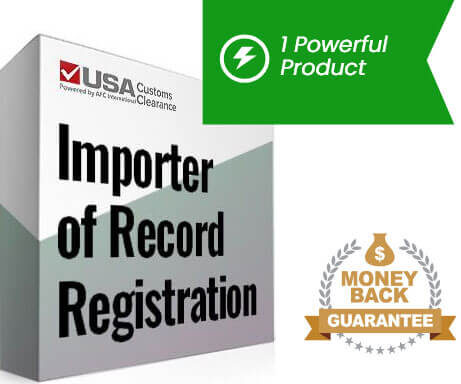
Filing Is Time-Consuming.
Avoid Making Mistakes and Extra Costs.
We Submit Directly To The CBP.
You may also need a customs bond to start your business. A customs bond is essentially an insurance policy for the duties and taxes owed on imported goods. Customs bonds, also known as import bonds, are required on shipments valued at $2,500 or more and they ensure a smooth and efficient flow of cargo between countries.
If you’re starting a business, you’ll likely need a continuous customs bond which will cover your shipments for a 12-month period. It’ll also cover Importer Security Filing (ISF) rules. With USA Customs Clearance, powered by AFC International, we make getting a customs bond easy, giving you more time to focus on your new business.
Once you’ve sourced your products and completed all of the necessary paperwork, it’s time to tackle the next big task. You need to start making plans for how to get your products from the manufacturer and into the hands of your customers.
This can be an extremely complicated step with a lot of moving parts. Not only do you have to figure out how to move your products (whether by land, sea, or air), but you also need to know how to package them for distribution. Additionally, you need to determine how to store them for greater accessibility, and organize first- and last-mile transport.
To overcome this challenge, the key is to partner with a trusted 3PL provider. We have the experience and know-how to provide a solution for all of your distribution and logistics needs. Our services include warehousing, pick and pack services, shipping and customs clearance.
The last major step you need to take in order to launch a successful import/export business is to begin marketing your products and services. Depending on the size and scale of your business, this could mean anything from cold-calling potential customers to rolling out a dedicated digital marketing campaign.
Throughout this process, you’ll need to build a strong brand, offer competitive pricing, boost your online presence and make your voice heard through advertising. Consider your target audience and the market you’re entering and provide solutions to the needs of your customers. Once you start to build a solid customer base, the process should become easier as the reputation of your business and products grow.
While the costs to start an import export business are comparatively low, they still aren’t cheap. On average, startup costs for a new import/export business will run you between $5,000 and $25,000. Let’s break down all of the capital you’ll need to get started.
The first thing you’ll need to consider is the initial costs it takes to start an import export business. That will include things like office space, a computer, phone, internet, etc. Fortunately, for entrepreneurs looking to keep costs low, it’s common to start an import/export business from home. This option reduces costs since many of these items are already covered. You’ll also need to cover the costs of the initial paperwork, like permits, licenses, registration fees, legal fees, and more.
Next, you have to consider operating costs. That includes costs like employee salaries, insurance and additional equipment. Depending on how you plan to source your products, supplies and labor can be two of the largest operating costs you’ll encounter. You’ll also have to pay for the distribution and logistics of your products, including fees for services like packaging, storage and shipping.
It’s important to remember that many of these costs require an investment that you likely won’t start seeing a decent return on until months or even years into starting the business.

If you’re going to start an import export business, there’s going to be a lot of paperwork no matter what industry you plan on entering. It stands to reason that an import/export business with so many compliance rules would come with a lot of paperwork. And that’s not even taking into account differing governmental regulations, foreign baking information, etc. The list goes on.
If you’re serious about starting an import/export business, there’s a lot of paperwork in your future. Below we’ve laid out the most common documents that you’ll encounter when starting an import/export business.
Once you find your first customer, one of the first documents you’ll need to begin the transaction is a pro forma invoice. A pro forma invoice is used for quotes as you and an international buyer negotiate on the sale. It can also be used to arrange financing, open a letter of credit or apply for the proper licenses. A pro forma invoice includes a description of the goods and a guarantee by the seller to provide said goods to the buyer at a specified date and price.
A commercial invoice is essentially an evolution of the pro forma invoice and a bill between the seller and the buyer. It includes much of the same information as the pro forma invoice, like a description of the goods, price, language to be used, etc. However, a commercial invoice also includes information like reference numbers, payment and banking information. The value of the items listed on the commercial invoice is used by customs officials to determine customs duty.
Once an order is ready for shipment, it’s time to create the packing list. The packing list is an extremely detailed and extensive document. Details contained on the packing list include quantity of goods, packaging, weight, dimensions and more. The packing list is not a substitute for a commercial invoice, however, it is often used by customs officials to check cargo.
A bill of lading (BOL) is essentially a contract between the owner of the goods and the carrier moving those goods. Depending on the method of transport that you’re using to move your products, this can either be an inland or ocean bill of lading.
If using an ocean bill of lading, you can use either a straight bill of lading or a shipper’s order bill of lading. A straight BOL is non-negotiable and directed to a specific consignee. On the other hand, a shipper’s order BOL is more flexible and does not have to be directed to a specific consignee.

Similar to a bill of lading, an air waybill is used for international shipments moved by air carriers. It’s also used to provide information on the goods being moved and allow them to be tracked during the shipment. Air waybills are shipper-specific and are non-negotiable.
While not required for every product or between every country, you may find that the product you’re shipping does require a certificate of origin. This can also be required for letters of credit or at the request of the buyer. Goods that require a certificate of origin require the document to be signed by a government official of some kind.
While this was formerly a physical document, you can now opt for an electronic certificate of origin. Certificates of origin come in two forms. The first form is generic, meaning that there are no trade agreements between the importing and exporting countries. A Free Trade Agreement certificate of origin means that preferential treatment like free or reduced tariffs may be in order.
Depending on the item you plan to import, its destination, composition, and a number of other factors, you may need either an import or export license. This type of license is required to ship your goods. More information on import and export licenses can be found below.
The EEI filing is submitted to the Automated Export System and is used when the value of your shipment exceeds $2,500 or when a validated export license is required. This information allows the U.S. Census Bureau to collect trade data on U.S. exports and ensure customs compliance. EEI filings are not required for most shipments to Canada or to most U.S. territories.
While these are the most common documents you’ll encounter, there are a number of other documents that can come into play. The Department of Commerce’s International Trade Administration has a list of some of these documents. Additional documents include certifications for products overseen by other governmental agencies, for temporary shipments, inspections, and more.
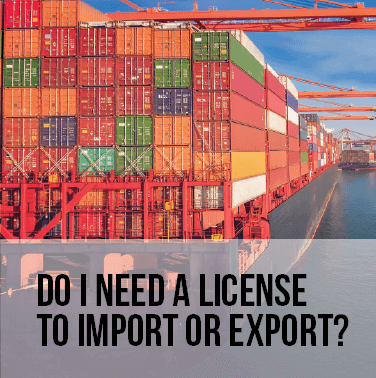
The short answer is: No, CBP does not require a license to import or export the vast majority of items. However, there are some commodities that do require some sort of documentation, such as licenses or certifications to import or export.
As a rule of thumb, you’ll want to check with the government agency tasked with overseeing the specific product that you’re looking to trade. They should be able to give you a binding ruling on whether or not a specific item requires a license. Similarly, you should check with state and local officials to determine whether or not they require any additional regulations that national agencies do not.
Our team of Licensed Customs Brokers has complete awareness of which products require an import license. If you’re not sure if your products require an import license, our experts can help you. Even better, we’ll guide you through the exact requirements that your products will need to comply with.

Worried about the Strict Regulations? Ask Our Experts.
Our 30 Minute Licensed Expert Consulting Will Personally Guide You.
The good news is the vast majority of internationally traded products do not require an import license to be imported into the United States. There are some exceptions, however. CBP doesn’t offer an exhaustive list of all items that require a license, but they do give guidelines for merchandise that may require additional clearance. Commodities that are likely to require an import license include:
An export license is a document that grants permission to export an item. It’s the exporter’s responsibility to research their products and do their ‘due diligence’ to determine whether or not their product requires an export license. If it does, the license will then be issued by the appropriate government agency. Typically the Bureau of Industry and Security or the U.S. Department of State’s Directorate of Defense Trade Controls handle export licensing.
Like products that require import licenses, the vast majority of internationally traded items don’t require an export license. Ultimately though, the determination is made on a per-item basis. When determining whether or not you need an export license, you’ll want to consider four things:
To better understand what items do and don’t require an export license, you should look to the Export Administration Regulations (EAR). EAR is administered by the U.S. Department of Commerce and regulates the export of dual-use items - items that have both commercial and military uses. These items can be found under the Commerce Control List (CCL). The CCL is broken up into 10 categories:
0. Nuclear Materials, Facilities and Equipment (and Miscellaneous Items)
If your item falls under the jurisdiction of the U.S. Department of Commerce and is not listed on the CCL, it is designated as EAR99. Most EAR99 commercial products do not require a license to be exported, however, some do.
Another way to determine whether or not an item you intend to export requires a license is by checking its Export Control Classification Number (ECCN). Methods of finding your item’s ECCN include:
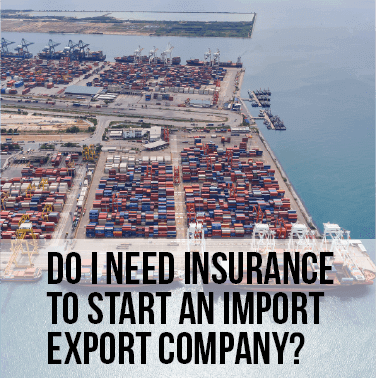
When you start a new business, there are a variety of insurance policies that you should be looking into. General liability insurance, workers’ compensation and property insurance are all standard coverages that a new business should consider. However, in the case of an eCommerce business, there are a couple of insurance options that the typical business wouldn’t normally consider.
One of the first insurance options you’ll want to look into is export credit insurance, courtesy of the Export-Import Bank of the United States (EXIM). There are a number of options to choose from, including policies for new exporters, as well as small to mid-sized businesses. That could mean single-buyer coverage, multi-buyer coverage, letters of credit, and more. These options are there to protect your business from lost profits and help expand your reach.
Export credit insurance, also known as Trade Credit Insurance, protects you in the case that your foreign buyer doesn’t pay. It covers both commercial and political policies to 95-percent. This protection helps give businesses the confidence to enter new markets, increase sales, and become more competitive by offering global customers open account credit terms.
These policies can be used to extend credit to foreign customers and insure against nonpayment by international buyers. Trade credit insurance policies also cover both commercial and political risks. In these policies, financing is arranged through a lender by using insured receivables as additional collateral.
Equally important when shipping goods is cargo insurance. There are a number of types of cargo insurance you can purchase, each with varying levels of protection and pricing. In general, however, a plan that includes ‘all-risk’ insurance is recommended. An all-risk policy protects you in the case of any lost or damaged cargo. In many cases, this policy also compensates you for lost time and profits as well.
No matter what type of cargo insurance you choose, you, as the shipper, have the responsibility to mitigate any potential opportunities for loss or damage. That means choosing a reliable carrier, packing your goods properly and ensuring safety for your cargo across the board. We offer access to a number of reliable 3PL partners that can help you with your shipment at every step in the supply chain. From order fulfillment and distribution to hauling freight, and more, we’ll take every precaution to ensure your products are secure.

It should go without saying, importers and exporters make money based on the number of goods and services they sell. The costs of labor, supplies, shipping, vendor fees and any other operating costs should all be taken into account. Anything leftover is considered profit.
For example, in 2018, the average cost of importing watermelons was $857 per ton, or 43 cents per pound. Let’s say you imported two tons of watermelons and were able to sell them domestically for 75 cents per pound, after shipping, vendor and other related fees. Calculating those costs comes out to a profit of $1,280. Obviously, this is an overly simplistic example, but it works to demonstrate how the process would work.
| Import Cost | Revenue | Profit |
| $1,720 | $3,000 | $1,280 |
Depending on the type of import/export company you plan to start, you may be paid by commission, salary, or retainer plus commission.
Just like any business, whether or not your import/export business is profitable depends on a number of factors. The prices you set, the cost of production and distribution, and how large you’re able to grow your business will all play a role in your profitability.
It’s estimated that the average profit for an individual that chooses to start an import export business is $75,000. On the higher end, you may see profits in the hundreds of thousands of dollars, and for the very few, profits can reach into the millions.
The best way to become profitable running an import/export business is to understand all of the costs involved, do your research, and ensure that your business is keeping up with market trends.
The amount that you charge for your products will obviously vary depending on the products you sell and the cost of production and distribution of those products. While there’s no hard and fast rule on product pricing, between 10 and 15 percent over cost is considered a good rule of thumb.

No Hassle Filing of Important Documents
Our 30 Minute Licensed Expert Consulting Will Personally Guide You.
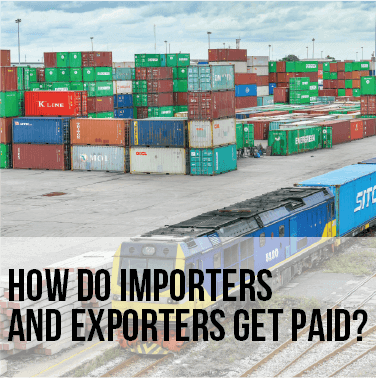
There are a number of ways that you can get paid as either an importer or an exporter, and each comes with a certain level of risk. It’s important to take each method of payment into account and determine which works best for you, your customers and the situation. We’ve detailed the most common methods below.
Conversely, for an importer, this method carries the greatest risk. When sourcing your products, it may be wise to shop around for a different seller to find a more secure transaction. By paying in advance, there’s always a chance that you won’t actually get the products you paid for.
The importer will then either pay the face amount on sight or on a specified date. While DCs are typically cheaper than LCs, they offer no verification process and limited recourse in the event of non-payment.
The benefit of consignment for the exporter is that it allows for faster shipments and greater availability of their product, which makes them more competitive on a global scale. It can also help reduce storage costs. If you plan on using consignment, insurance and the help of a trusted 3PL provider are a must.
When you start an import export business, it’s more important than ever to ensure that you’re following the correct protocols and that you’re compliant with customs enforcement. As the importer of record, you are fully responsible for your business and the goods you’re trading.
That’s why it’s so important to work with a licensed customs consultant. If you’re still learning the ins and outs of international trade, our team of experts can help you with the finer points of starting your business. Not only can they walk you through the import/export process and customs clearance, but they can also help you become a registered importer, secure a customs bond, accurately classify your products, and more.
At USA Customs Clearance, powered by AFC International, we’ll work with you every step of the way to make sure you have all the information you need to help get your business off the ground. Speak with one of our import/export consultants today and get started.
 Copy URL to Clipboard
Copy URL to Clipboard
I am from the Caribbean and I am interested in starting an import/export business.
This article was a very helpful to me cause I think in the very nerest future to start import products from China and India into the United states I am sure I'll use your help